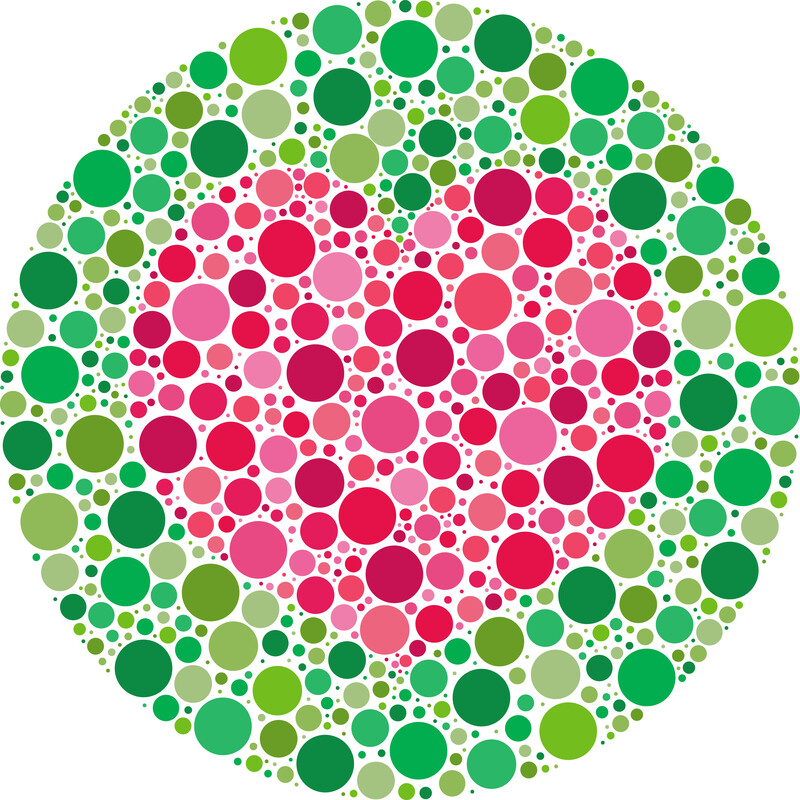 ◆What is “Color Universal Design”?
◆What is “Color Universal Design”?
“Color Universal Design” refers to “the design of products from the user’s point of view so that information can be conveyed as accurately as possible to all people, taking into consideration their diverse color vision” (Tokyo Metropolitan Government Color Universal Design Guidelines). For example, people with abnormal color vision, people with retinal diseases such as glaucoma, and people with cataracts may have difficulty distinguishing colors, and therefore may not be able to obtain appropriate information using colors depending on the color scheme. Are you able to convey the information you are sending out in your color flyers, guides, and websites in an easy-to-understand and correct manner?
◆”The Importance of Correctly Conveying “Information Using Color
According to the Japanese Ophthalmological Society, one in 20 men and one in 500 women in Japan have abnormal color vision. As the development of painting, printing, and computer technology has led to the rapid shift from black-and-white displays to color, it can be said that the need for correctly conveying information using color is increasing, and it is necessary to be mindful of design that allows all users to obtain information equally.
◆Let’s start by checking the existing media.
As a first step in our efforts toward color universal design, let’s first check existing information media. As a simple method, it is sufficient to copy and print the information in black and white and check whether it can be read properly. There are tools for checking how each color vision type looks in both printed and web-based media, so it is recommended to make use of these tools as well. If a problem is found, we will work to correct it.
With just a little effort, the power of information dissemination can change dramatically. Let’s consider the ingenuity and care to provide information that are easy to understand for all people.
◆MHLW partially amended the Occupational Safety and Health Regulations
It has become clear that the majority of people who are identified as having abnormalities in the color vision test are able to perform their work without any problems.
However, there have been cases where employers have restricted the employment of people who are identified as having abnormalities in the color vision test, even when there are no special problems with their work.
In July 2001, the Ministry of Health, Labor and Welfare (MHLW) partially amended the Occupational Safety and Health Regulations, etc., and abolished the color vision test as an item of medical checkup at the time of employment, which came into effect on October 1, 2001.
When hiring workers, rather than attaching job conditions such as “color blindness is not acceptable,” please make sure to describe in detail the nature of the work that involves the use of color, and carefully consider the necessity of medical examinations, including color vision tests, in relation to the nature of the job at the time of employment selection, so as not to lead to discrimination in employment.




